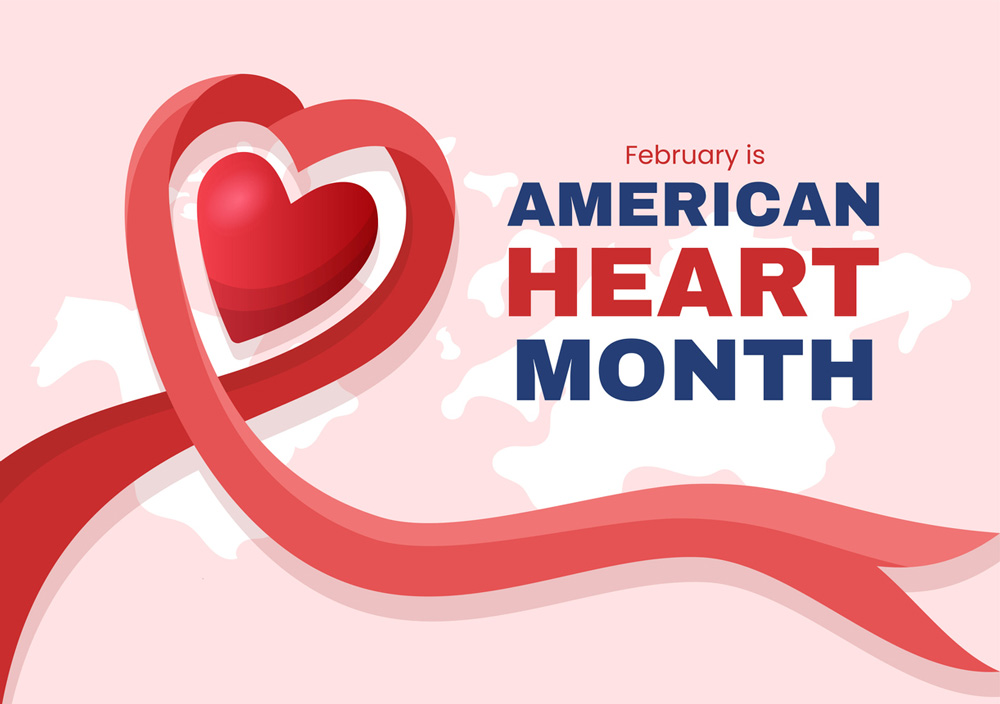A Healthy People 2030 Spotlight: American Heart Month
Reduce the Risk of Heart Disease through Preventative Care and a Healthy Lifestyle
 This month we go RED at HealthCare Dynamics International (HCDI) to support American Heart Month. Heart disease, a leading cause of death among Americans, especially women, was responsible for claiming the lives of over 300,000 women and 350,000 men in 2021 – that’s 1 in every 5 women and 1 in every 5 men! The Centers for Disease Control and Prevention (CDC) reports over 60 million American women are living with some form of heart disease today.
This month we go RED at HealthCare Dynamics International (HCDI) to support American Heart Month. Heart disease, a leading cause of death among Americans, especially women, was responsible for claiming the lives of over 300,000 women and 350,000 men in 2021 – that’s 1 in every 5 women and 1 in every 5 men! The Centers for Disease Control and Prevention (CDC) reports over 60 million American women are living with some form of heart disease today.
Heart Disease Symptoms
Often, heart disease is “silent” and not diagnosed until a person experiences symptoms of a heart attack, arrhythmia or heart failure. The most common heart attack symptom is chest pain but is not always severe or even the most noticeable symptom in women. Women describe heart attack pain as pressure or tightness. And it’s possible to have a heart attack without chest pain. Below are common heart disease symptoms for both men and women:
| Heart Attack | Arrhythmia | Heart Failure |
| · Chest pain or discomfort
· Neck, jaw, shoulder, upper back or upper belly (abdomen) discomfort · Shortness of breath · Pain in one or both arms · Nausea/vomiting · Sweating · Lightheadedness/ dizziness · Unusual fatigue · Heartburn (indigestion) |
Fluttering or palpitations in the chest | · Shortness of breath
· Fatigue · Swelling of the feet, ankles, legs, abdomen, or neck veins |
Heart Disease Risk Factors
High blood pressure, high cholesterol, and smoking are the top three risk factors for heart disease. Other risk factors for heart disease include diabetes, being overweight or obese, unhealthy diet, physical inactivity, and excessive alcohol consumption. By adopting a healthier lifestyle and in some cases, taking prescribed medicine, the risk of heart disease is reduced.
Heart Disease Prevention
Ways to reduce the risk of heart disease include:
- Visit the doctor regularly to understand and control blood pressure and cholesterol levels, and get tested for diabetes if necessary
- Don’t smoke
- Get at least 150 minutes (about 2 and a half hours) of physical activity each week
- Make and eat a balanced diet, including vegetables, fruit, whole grains, lean meats and less processed foods high in sugar, fat, and sodium
- Limit alcohol consumption to one drink a day
- Lower stress level by finding healthy ways to cope with stress
Healthy People 2030 Heart Disease Objectives
Healthy People 2030 focuses on preventing and treating heart disease and improving overall cardiovascular health through measuring a series of objectives. Healthy People 2030 finds improvement is necessary across the country to:
- Increase the cardiovascular health score (3.2 out of 7.0)
- Reduce the percentage of adults with high blood pressure (45%)
- Reduce the cholesterol level of adults (190.9 mg/dl mean total)
- Increase control of high blood pressure in adults (16.1% have it under control)
- Increase cholesterol treatment in adults (44.9% receive treatment)
| Objective | Most Recent Data | Target | Baseline |
| Improve cardiovascular health in adults
|
3.2 cardiovascular health score
(2013-16) |
3.5 cardiovascular health score | 3.2 (out of 7.0) cardiovascular health score (2013-16) |
| Reduce the proportion of adults with high blood pressure | 45.0%
(2017-20) |
41.9% | 45.0%
(2017-20) |
| Reduce cholesterol in adults
|
190.9 mg/dL
(2013-16) |
186.4 mg/dL | 190.9 mg/dL
(2013-16) |
| Increase control of high blood pressure in adults
|
16.1%
(2017-20) |
18.9% | 16.1 %
(2017-20) |
| Increase cholesterol treatment in adults
|
44.9 %
(2013-16) |
54.9 % | 44.9 %
(2013-16) |
To keep blood pressure and cholesterol levels under control and improve cardiovascular health scores, Healthy People 2030 advises Americans to get screened regularly by a healthcare provider, take medication when necessary, and adopt healthy lifestyle changes, such as eating healthy foods and exercising.
HCDI Engages in Preventative Care Outreach for Heart Disease Prevention
HCDI engages with hard-to-reach members to close gaps in care for health plans and improve health outcomes. Our trained community health workers (CHW) connect with members to educate, screen for Social Determinants of Health (SDoH) barriers and health issues, provide social support resources when necessary, and schedule wellness appointments with health care providers. Our goal, at HCDI, is to ensure those most vulnerable receive quality, preventative care to reduce their risk of chronic conditions, especially heart disease.
To learn more about our health equity engagement services, visit www.hcdi.com or contact us directly at info@hcdi.com.



